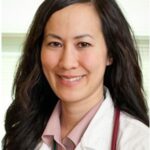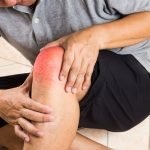Optimizing Health in Later Years: Understanding the Needs of the Aging Population
Phoebe Yin, ND
Healthy aging is a hot topic for the growing elderly population across the globe. The current generation of older people is increasingly interested in promoting healthy aging, whether this has to do with managing chronic disease, preventing cancer, addressing sex drive, or minimizing arthritis so that they can continue to play golf.
As life expectancy continues to rise, there are many factors that can slow down the aging process and allow a person to stay vital. It is inspirational to consider examples of vigorous centenarians in public life: George Bernard Shaw was writing at age 91. Michelangelo designed churches at 88. Walt Stack completed the Iron Man Triathlon with a time of 26 hours and 20 minutes. Claude Monet began his Water Lily series at age 76, completing it at age 86. At age 88, Frank Lloyd Wright designed the Marin County Civic Center. Tesicki Igarashi climbed Mt Fugi at age 100, having taken up climbing at age 90. When he was 96 and still playing his cello, Pablo Casals commented, “Age is a relative matter. If you continue to work and absorb the beauty of the world around you, you find that age does not necessarily mean getting old.”1
Much research has been poured into understanding human aging and the quest for the secrets of longevity and vitality. One theory of aging postulates that senescence is due to accumulated mistakes, eg, “wear and tear,” in the reproduction of cells in the body. Another theory suggests genetically programmed senescence, or apoptosis, based on the idea that our destruction is coded in the genes. Still other theories involve the depletion of stem cells, free radical damage, hormonally influenced biological changes, and immunological decline.2 Aside from research and an increased understanding about the aging process, there is no better practitioner in the position of promoting “health aging” than a naturopathic physician who understands geriatric medicine. “Promoting health” is almost interchangeable with the principle of Prevention, a basic fundamental tenet of naturopathic primary care. Treating the Whole Person could not be more important than in an older individual whose physiologic reserves decline and one organ system is more likely to affect another.
Health promotion should not be limited to immunizations to prevent influenza and pneumonia, and preventive services such as annual wellness visits, DEXA scans, screening for depression, fall risk, cognition evaluation, etc, although these play important roles. In this paper, I will review common topics in geriatric medicine and offer a few naturopathic perspectives on diet, nutrient, and botanical therapy.
Life Expectancy vs Life Span
First, it is interesting to reflect on the difference between life expectancy and life span. Life expectancy refers to what proportion of a possible age a particular person may live. Life span suggests a biological limit to how many years a species can expect to survive. In general, naturopathic geriatric medicine has the most to contribute to improving life expectancy, although new genetic breakthroughs in modern medicine may ultimately affect life span as well.
Life span is generally fixed. The current estimated life span of humans is 85 to 90 years. The percentage of individuals over age 95 has been about the same for the past 100 years; only about 1 out of 10 000 people will live to be 100. However, more people are living longer, closer to their fixed natural life span.
Life expectancy is still rising steadily. Just 100 years ago, life expectancy was shorter by around 25 years in the West.
- 1900 = 60 years
- 1950 = 70 years
- 1990 = 75 year
- 2040 = 80 or more?
The Role of the Naturopathic Primary Care Geriatric Medicine
In order to provide the best care, it is important to recognize that the care of older patients differs from that of younger patients for a number of reasons. The better we can understand the process of aging and intervene in this process, the better we are to distinguish between the need to focus on disease management and prevention versus helping our older patients adjust to normal changes.
Physiologic Reserve & Disease
Many of the changes associated with aging result from gradual loss of function, starting around age 30. However, because of the redundancy of most organ systems, the decrease does not become functionally significant until the loss is fairly extensive. As we approach 85 years old, we have significantly less organ system reserve remaining.
The hallmark of aging lies not in the resting level of performance but in how an organ adapts to external stress. For example, an older person may have a normal resting cardiac output and pulse but be unable to achieve an adequate compensatory increase during a stress (exercise) electrocardiogram. Another example is an older person with a normal fasting blood sugar but an inability to handle a glucose load that would be considered within normal parameters for younger individuals.
Implications of loss of reserve include difficulty withstanding health challenges. For example, a flu might be fatal, and there is increased likelihood of both multi-system failure (e.g. cardio-pulmonary-renal failure with coma) and new illnesses such as heart attacks, strokes, pneumonia, and fractures.
Preserving Organ System Reserve
One of the goals in geriatric medicine is thus preservation of organ system reserve. We can either choose our parents wisely or we can choose not to do destructive things to our bodies (eg, smoking and consuming excessive alcohol), and instead engage in health maintenance and prevention (which includes routine screening tests such as colonoscopies, mammograms, etc) and exercise the mind and body.
Treat the Cause: Treating the cause means being willing to take the time to properly evaluate symptoms. The question is whether there are medically treatable factors that are common to the various manifestations of aging we see. Could aging treatments delay signs and symptoms of aging such as sensory changes, musculoskeletal problems, or skin-related changes? One way to think about changes in aging is the “rule of fourths.” This rule states that, of changes often attributed to normal aging by the general public, about one-fourth is due to disease, one-fourth to disuse, one-fourth to misuse, and only one-fourth to physiologic aging.3
Therefore, the distinction between so-called normal aging and pathologic changes is critical to the care of older people. This helps avoid the tendency to dismiss treatable pathology as simply a concomitant of old age and visa versa (treating natural aging processes as though they were diseases). The latter is particularly dangerous because older adults are so vulnerable to iatrogenic effects. Take time to study geriatric medicine and understand the pertinent changes that commonly occur with aging.
For example, in the integumentary (skin) system, common and “normal” age-related changes include: loss of dermal and epidermal thickness, leading to thinning of the skin and increased susceptibility to tearing; flattening of papillae, resulting in dryness and pruritis; atrophy of sweat glands, resulting in decreased sweating and ability to regulate heat; collagen cross-linking and elastin regression, resulting in increased wrinkling and laxity of the skin; loss of subcutaneous fat, resulting in loss of fat pads protecting bone and resulting in pain; decreased melanocytes, which increases the need for protection from the sun; and a decline in fibroblast proliferation, which results in increased time for wound healing.
Another example would be to not rely on a serum creatinine level for the evaluation of kidney function in an older individual, and instead applying the Cockcroft-Gault equation for a more accurate assessment.
Nutrition in Older Adults
Because of the insidious nature of malnutrition in the elderly, and its overlap with symptoms associated with the usual aging process, it is important to recognize early warning signs of malnutrition. Several screening and assessment tools specific to the older population are available. The Nutrition Screening Initiative4 was developed to improve the nutritional status of older Americans with chronic disease. The goal is identification of elderly individuals who are at nutritional risk (Table 1).
Table 1. Warning Signs of Malnutrition (DETERMINE)
| D | Disease |
| E | Eating poorly |
| T | Tooth loss, mouth pain, chewing difficulty |
| E | Economic hardship |
| R | Reduced social contact and eating meals alone |
| M | Multiple medicines (3 or more prescribed &/or OTC meds) |
| I | Involuntary weight loss or gain (10 lb in 6 months) – this is a red flag |
| N | Needs assistance with self-care |
| E | Elderly years (older than 80 years of age) with increasing fragility |
Malnutrition occurs frequently in older adults and can contribute to reduced quality of life and increased morbidity and mortality. For example, physiological changes in aging can affect nutritional status in the elderly. As one gets older, lean body mass declines but is offset by an increase in body fat. This leads to a decrease in energy expended during rest, and thus the need for fewer calories and more protein. Food intake can be affected by various changes in older adults’ lives, including physiologic, social, and economic changes. The sense of smell and taste declines dramatically with aging (taste buds decrease in number and size, affecting sweet and salty tastes the most), which can lead to reduced appetite and subsequent weight loss.
With aging, there is a decrease in the secretion of gastric acid, delayed gastric emptying, early satiety, and impairment in the regulation of food intake. Aging may influence the production of, and/or CNS sensitivity to, several digestive hormones thought to be involved in satiety.
All of these factors interfere with the digestion of protein and other nutrients. The stomach may also decrease its secretion of intrinsic factor, which is needed to help absorb vitamin B12. The small intestine becomes less capable of absorbing some macro- and micronutrients, including protein, carbohydrate, fat, and some vitamins and minerals.
One of the most common nutritional problems in elderly individuals is protein-calorie malnutrition, especially in nursing homes; borderline protein-calorie malnutrition is common in elderly outpatients. Among protein-calorie-malnourished patients, there is greater morbidity, associated with such conditions such as increased infections, longer recovery time for wound healing, and less recovery of function.
Protein requirements in elderly are: 0.8-1 g protein per kg body weight. Persons recuperating from hip fracture or major surgery may have higher protein needs, at 1 g/kg body weight.
For the elderly, a slightly higher body mass index seems to be protective (consider the risk of morbidity/mortality in wasting elderly individuals). Guidelines for significant weight loss in the general population include 10% weight loss within 6 months, 5% within one month, or 2% within 1 week.
Common Micronutrient Deficiencies in Older Adults
Common nutritional deficiencies in the geriatric population include: calcium, magnesium, zinc, iron, selenium, B12, folic acid, B6, B1, and vitamin D. These deficiencies may be associated with cognitive impairment, poor wound healing, anemia, bruising (deficiencies in vitamins K, C, E, or bioflavonoids), and increased risk for infections and cancer. Trace mineral deficiencies may be associated with immune dysfunction.
Vitamin B1
Vitamin B1 (thiamine) is involved in nerve transmission in parts of the brain (cholinergic neurons) that deteriorate in Alzheimer’s disease. The activity of vitamin B1-dependent enzymes has been found to be lower in the brains of people with Alzheimer’s disease.5 It has therefore been suggested that vitamin B1 supplementation could slow the progression of Alzheimer’s disease.
A deficiency of B vitamins may contribute to dementia and age-related decline in cognitive function.6 Daily supplementation of 10-50 mg daily can help prevent thiamine deficiency in the elderly.
Vitamin B12 / Folic Acid
Vitamin B12 and/or folic acid deficiency may lead to signs and symptoms of dementia.7
Older adults are at high risk of B12 deficiency.8 Some persons with low-normal serum B12 levels may in fact be deficient,9 with resultant neurologic, psychological, or hematologic disease. A more functional diagnosis can be made by measuring methylmalonic acid.10
In the past, the majority of B12 deficiencies were thought to result from intrinsic factor deficiency. It is now thought that approximately 15% of older adults (>60 years) poorly absorb protein-bound B12.11 This is a result of malabsorption of the food-protein-B12 complex in the stomach, related to gastric achlorhydria and often associated with atrophic gastritis. This may be a consequence of current or past Helicobacter pylori infection in some cases.
Vitamin E
According to a large community-based study, vitamin E can help reduce the cognitive decline associated with normal aging.12 Other studies suggest that a combination of vitamins E and C can not only improve cognition in the elderly, but also reduce risk of vascular dementia.13
Vitamin D
Vitamin D deficiency is common among older individuals.14 Lack of sun exposure, impaired skin synthesis of pro-vitamin D, and decreased hydroxylation in the kidney with advancing age contribute to marginal vitamin D status in many older adults. In addition, dietary vitamin D intake is often low in older subjects.15
Inadequate vitamin D status has been linked with muscle weakness, functional impairment, depression, and increased risk of falls and fractures.14 Lower serum 25-hydroxy-vitamin D concentrations in older persons have also been associated with a greater risk of future nursing home admission.16 Patients with vitamin D insufficiency may also have relative hypocalcemia and high serum parathyroid hormone concentrations; this secondary hyperparathyroidism can be attenuated by the administration of vitamin D supplements17; however, other causes of hyperparathyroidism should also be sought.
Calcium
Calcium nutrition is strongly influenced by age. The efficiency of calcium absorption from the gastrointestinal tract decreases significantly after age 60 in both sexes.18 Osteoporosis affects more than 10 million people in the United States, and causes more than 1.5 million fractures within that population each year.19 Given the impact of calcium deficiency on cortical bone loss, the adequate intake reference value for calcium for those over 71 years of age is 1200 mg/day.20
Nutrition and Memory and Cognitive Function
Several nutritional and herbal compounds have shown to be beneficial for cognitive function in the elderly:
Phosphatidylserine (PS) is a member of a group of phospholipids that are important for cell-to-cell communication. PS has been shown to reduce some brain effects of aging in animals and to improve memory in human subjects.21 PS may improve learning, concentration, and memory in elderly individuals who aren’t suffering from degenerative neurological disease or psychiatric disease.22 In studies, the dose of PS used for cognitive deficits was around 200-400 mg/day.22
Docosahexaenoic Acid (DHA) is an essential fatty acid found as a component of phospholipids, primarily phosphatidylserine. Human breast milk is very rich in DHA, an important nutrient in an infant’s brain development. DHA is one of the omega-3 fatty acids found in fish oil; cod liver oil is a particularly rich source. Food sources of DHA include organ meats, fish, and eggs. If taken as a supplement, 200-600 mg/day minimum is recommended (case-based).
Folic Acid, at a dose of 800 µg/day, has been shown in clinical trials to help slow the cognitive decline of aging and improve memory.23
Acetyl-L-Carnitine, which has been called the “anti-aging nutrient,” is structurally similar to acetylcholine, a brain neurotransmitter. ALC has been shown to increase cerebral blood flow, improve energy metabolism in brain tissue, and reduce oxidative stress and excitotoxicity;24 it may also have a positive effect on emotions and mood.24 It shown to improve cognitive function and memory in patients with age-related decline in cognitive function and dementia. ALC has been shown to be generally well tolerated at oral doses of 1-3 g daily.24
Rosmarinus officinalis is known as “the herb of remembrance.” Rosemary, administered via aromatherapy, has been shown to improve cognitive function in healthy volunteers.25
Salvia officinalis: Salvia means “to save.” Folk wisdom teaches that sage increases longevity. “How can a man die who has sage in his garden?” (old Arab proverb)
Others: Ginkgo biloba, Panax ginseng, Huperzia serrata, Schisandra cinensis
Exercise
All parts of the body which have function, if used in moderation and exercised in labors to which each is accustomed, become thereby well developed and age slowly, but if unused and left idle, become liable to disease, defective in growth and age quickly.
(Hippocrates)
There is evidence that much of what was once viewed as aging is actually secondary to disuse. There are striking similarities between structural and functional declines associated with aging and the effects of enforced inactivity.
It is recommended that older individuals engage in a combination of aerobic exercise (such as brisk walking) for at least 10 minutes, exercise with weights for 10 additional minutes, and focus on flexibility for another 10 minutes (tai chi and yoga are both excellent for flexibility).
Exercising with friends compounds the benefits and may make it easier to fulfill a regular exercise commitment. Community fitness programs also offer activity, healthy lifestyle, and socially-oriented programming that allows older adults to take greater control of their health. Insurance covers some of these programs.26
Sleep
Sleep is one of the processes deeply affected by aging, with more than 50% of older individuals experiencing insomnia.27 The practitioner should understand common underlying problems, appropriate treatments, and indications for referral to a sleep specialist.
While sleeping well is no guarantee of longevity, it does help to maintain many vital functions. This includes the major restorative functions in the body such as tissue repair, muscle growth, and protein synthesis, which occur almost exclusively during sleep.
As one gets older, it is normal to need less sleep. Most people over age 70 need fewer than 6 hours of sleep per night, and they tend to be light sleepers. There is a limited but growing body of literature suggesting that a daily afternoon nap may be a safe and effective means of increasing total sleep and, in so doing, improve waking function. The duration of the nap should be limited so as not to contribute to insomnia.
Closing Comments
In conclusion, the percentage of the elderly is ever-increasing in the healthcare system. Many of these individuals are “baby boomers” who are different from the generations that preceded them. They are more savvy, assertive, health-conscious, and engaged in their care; they are also interested in “healthy aging.” Naturopathic primary care physicians are well positioned to address the special needs of this population.
 Phoebe Yin, ND, received her ND degree from Bastyr University and completed a 2-year residency at Bastyr Center for Natural Health. Currently, Dr Yin is an associate professor at Bastyr University who teaches Advanced Geriatrics, Dermatology, and Clinical Ecology. She also supervises student clinic rotations at Bastyr Center for Natural Health and is the director of the School of Naturopathic Medicine Mentorship program. She takes a special interest in allergies, digestive disorders, women’s and geriatric health.
Phoebe Yin, ND, received her ND degree from Bastyr University and completed a 2-year residency at Bastyr Center for Natural Health. Currently, Dr Yin is an associate professor at Bastyr University who teaches Advanced Geriatrics, Dermatology, and Clinical Ecology. She also supervises student clinic rotations at Bastyr Center for Natural Health and is the director of the School of Naturopathic Medicine Mentorship program. She takes a special interest in allergies, digestive disorders, women’s and geriatric health.
References:
- Fries J. Aging Well: A Guide for Successful Seniors. Boston, MA: Addison-Wesley Publishing; 1989: 3-4.
- Jin K. Modern Biological Theories of Aging. Aging Dis. 2010;1(2):72-74.
- Ham RJ, Sloane PD, Warshaw GA, et al. Primary Care Geriatrics: A Case-Based Approach. 6th Ed. Philadelphia, PA: Elsevier; 2015: 4.
- The Nutrition Screening Initiative. Determine Your Nutritional Health. Available at: http://www.cdaaa.org/images/Nutritional_Checklist.pdf. Accessed July 10, 2015.
- Mastrogiacoma F, Bettendorff L, Grisar T, Kish SJ. Brain thiamine, its phosphate esters, and its metabolizing enzymes in Alzheimer’s disease. Ann Neurol. 1996;39(5):585-591.
- Scott KR, Barrett AM. Dementia syndromes: evaluation and treatment. Expert Rev Neurother. 2007;7(4):407-422.
- Agarwal R. Vitamin B₁₂ deficiency & cognitive impairment in elderly population. Indian J Med Res. 2011;134:410-412.
- Wong CW. Vitamin B12 deficiency in the elderly: is it worth screening? Hong Kong Med J. 2015;21(2):155-164.
- Snow CF. Laboratory diagnosis of vitamin B12 and folate deficiency: a guide for the primary care physician. Arch Intern Med. 1999;159(12):1289-1298.
- Green R. Indicators for assessing folate and vitamin B12 status and for monitoring the efficacy of intervention strategies. Food Nutr Bull. 2008;29(2 Suppl):S52-63; discussion S64-S66.
- Baik HW, Russell RM. Vitamin B12 deficiency in the elderly. Annu Rev Nutr. 1999;19:357-377.
- Morris MC, Evans DA, Bienias JL, et al. Vitamin E and cognitive decline in older persons. Arch Neurol. 2002;59(7):1125-1132.
- Masaki KH, Losonczy KG, Izmirlian G, et al. Association of vitamin E and C supplement use with cognitive function and dementia in elderly men. Neurology. 2000;54(6):1265-1272.
- Janssen HC, Samson MM, Verhaar HJ. Vitamin D deficiency, muscle function, and falls in elderly people. Am J Clin Nutr. 2002;75(4):611-615.
- Annweiler C, Schott AM, Rolland Y, et al. Dietary intake of vitamin D and cognition in older women: a large population-based study. Neurology. 2010;75(20):1810-1816.
- Visser M, Deeg DJ, Puts MT, et al. Low serum concentrations of 25-hydroxyvitamin D in older persons and the risk of nursing home admission. Am J Clin Nutr. 2006;84(3):616-622.
- Lips P. Vitamin D deficiency and secondary hyperparathyroidism in the elderly: consequences for bone loss and fractures and therapeutic implications. Endocr Rev. 2001;22(4):477-501.
- Heaney RP, Gallagher JC, Johnston CC, et al. Calcium nutrition and bone health in the elderly. Am J Clin Nutr. 1982;36(5 Suppl):986-1013.
- American Academy of Orthopaedic Surgeons. Position Statement. Revised December 2014. AAOS Web site. http://www.aaos.org/about/papers/position/1113.asp. Accessed July 15, 2015.
- NIH Medline Plus. New Recommended Daily Amounts of Calcium and Vitamin D. NIH Medline Plus. 2011;5(4):12. Available at: http://www.nlm.nih.gov/medlineplus/magazine/issues/winter11/articles/winter11pg12.html. Accessed July 15, 2015.
- McDaniel MA, Maier SF, Einstein GO. “Brain-specific” nutrients: a memory cure? Nutrition. 2003;19(11-12):957-975.
- [No authors listed] Phosphatidylserine. Monograph. Altern Med Rev. 2008;13(3):245-247.
- Morris MC, Tangney CC. Is dietary intake of folate too low? Lancet. 2007;369(9557):166-167.
- [No authors listed] Acetyl-L-carnitine. Monograph. Altern Med Rev. 2010;15(1):76-83.
- Moss M, Oliver L. Plasma 1,8-cineole correlates with cognitive performance following exposure to rosemary essential oil aroma. Ther Adv Psychopharmacol. 2012;2(3):103-113.
- Healthways SilverSneakers Fitness. Available at: https://www.silversneakers.com/. Accessed July 1, 2015.
- Gentili A. Geriatric Sleep Disorder. Updated September 23, 2014. Medscape Web site. http://emedicine.medscape.com/article/292498-overview. Accessed July 15, 2015.










